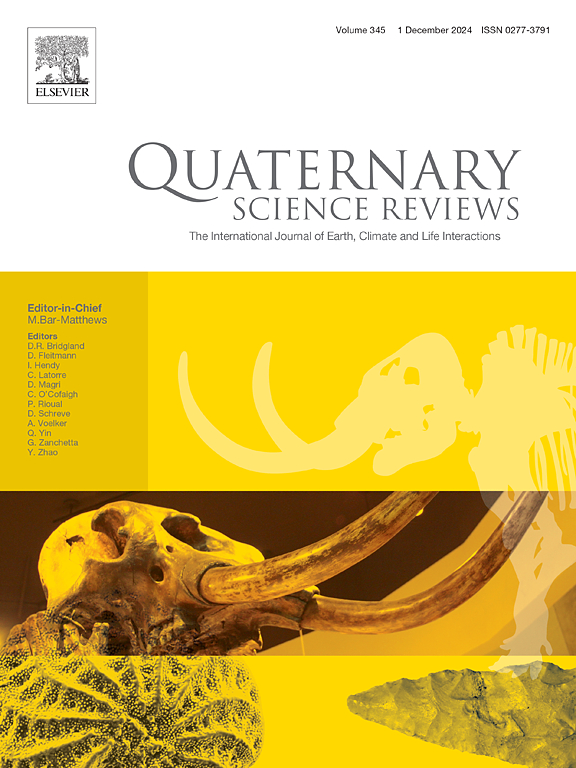Bones and teeth isotopes as archives for palaeoclimatic, palaeoenvironmental and palaeoecological data
IF 3.2
1区 地球科学
Q1 GEOGRAPHY, PHYSICAL
引用次数: 0
Abstract
This review paper explores the contribution of the stable isotope analysis of mammalian bones and teeth to the study of palaeoclimate, palaeoenvironment, and palaeoecology. These skeletal remains, composed of both organic and inorganic materials, preserve isotopic signals that reflect an organism's dietary habits and other behaviours, as well as environmental, and climatic conditions during an animal's lifetime. Here, we discuss how carbon, nitrogen, sulfur, oxygen, hydrogen, strontium, and zinc isotopes in bones and teeth have been used to reconstruct past changes in temperature, precipitation, aridity, permafrost, vegetation, seasonality, and animal diet and mobility. We identify areas where understanding is limited and suggest avenues for future research. Additionally, we highlight how information from different isotopes and tissues can be integrated with archaeological findings to assess the impact of environmental shifts on animal behaviour and ecosystems, offering a deeper understanding of human-animal interactions throughout (pre)history. Ultimately, stable isotopes in bones and teeth serve as more than just palaeo-proxies; they offer insights into human and non-anthropogenic impacts on ecosystems, and help establish baselines for contemporary conservation, ecosystem restoration and rewilding policies and practices.
骨骼和牙齿同位素作为古气候、古环境和古生态资料的档案
本文综述了哺乳动物骨骼和牙齿稳定同位素分析对古气候、古环境和古生态研究的贡献。这些骨骼残骸由有机和无机材料组成,保存了同位素信号,反映了生物体的饮食习惯和其他行为,以及动物一生中的环境和气候条件。在这里,我们讨论了骨骼和牙齿中的碳、氮、硫、氧、氢、锶和锌同位素如何被用来重建过去的温度、降水、干旱、永久冻土、植被、季节性、动物饮食和流动性的变化。我们确定了理解有限的领域,并提出了未来研究的途径。此外,我们强调了如何将来自不同同位素和组织的信息与考古发现相结合,以评估环境变化对动物行为和生态系统的影响,从而更深入地了解整个(前)历史中人类与动物的相互作用。最终,骨骼和牙齿中的稳定同位素不仅仅是古代用品;它们提供了关于人类和非人类对生态系统影响的见解,并帮助建立了当代保护、生态系统恢复和再放野政策和做法的基线。
本文章由计算机程序翻译,如有差异,请以英文原文为准。
求助全文
约1分钟内获得全文
求助全文
来源期刊

Quaternary Science Reviews
地学-地球科学综合
CiteScore
7.50
自引率
15.00%
发文量
388
审稿时长
3 months
期刊介绍:
Quaternary Science Reviews caters for all aspects of Quaternary science, and includes, for example, geology, geomorphology, geography, archaeology, soil science, palaeobotany, palaeontology, palaeoclimatology and the full range of applicable dating methods. The dividing line between what constitutes the review paper and one which contains new original data is not easy to establish, so QSR also publishes papers with new data especially if these perform a review function. All the Quaternary sciences are changing rapidly and subject to re-evaluation as the pace of discovery quickens; thus the diverse but comprehensive role of Quaternary Science Reviews keeps readers abreast of the wider issues relating to new developments in the field.
 求助内容:
求助内容: 应助结果提醒方式:
应助结果提醒方式:


